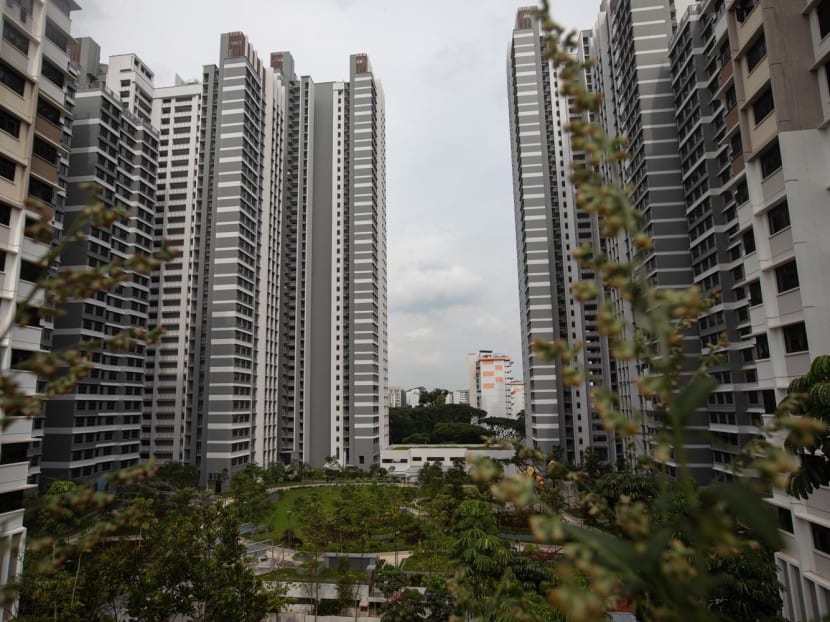UOB, DBS, OCBC raise fixed home loan rates to up to 4.5%, highest in almost two decades, say analysts
SINGAPORE – Home loan rates went past the 4 per cent mark on Tuesday (Nov 15) after three major banks here raised their fixed rate packages, with the United Overseas Bank (UOB) being the highest at 4.5 per cent for a two-year loan.

- UOB raised fixed rate packages for home loans to 4.5 per cent for a two-year loan
- OCBC offers one-year and two-year fixed rate packages at 4.3 per cent per year
- DBS is now offering a rate of 4.25 per cent with tenures of two to five years
- HSBC raised its fixed rates for two-year and three-year loans to 4.25 per cent two weeks ago
- Economists have linked the increase in interest rates to the recent US Federal Reserve hikes
SINGAPORE – Home loan rates went past the 4 per cent mark on Tuesday (Nov 15) after three major banks here raised their fixed rate packages, with the United Overseas Bank (UOB) being the highest at 4.5 per cent for a two-year loan.
This is the highest in almost two decades, said analysts.
UOB’s head of Group Personal Financial Services Jacquelyn Tan said as global interest rates continue to increase, it will continue to monitor market conditions and regularly review home loan packages to make sure they remain competitive.
DBS, Singapore’s largest bank, is now offering a rate of 4.25 per cent with tenures of two to five years.
Meanwhile, OCBC offers one-year and two-year fixed rate packages at 4.3 per cent per year.
This came two weeks after HSBC raised the fixed rates for its two-year and three-year home loan packages to 4.25 per cent.
This brings fixed home loan rates above the 4 per cent medium-term interest rate floor that the Monetary Authority of Singapore (MAS) has set to determine the loan amount that an individual can apply for.
This framework ensures people continue to borrow or take loans prudently as interest rates rise.
Maybank economist Chua Hak Bin said this is the “highest mortgage rates young Singaporeans will have seen in their lifetime” and it will go higher in tandem with further rate hikes in the United States.
The US Federal Reserve raised its benchmark lending rate by 0.75 percentage points, the sixth increase this year, in an attempt to combat high inflation.
Mr Chua said the loan rates are expected to exceed 5 per cent by early next year.
Based on the global inflation situation, CIMB economist Song Seng Wun predicts that the rates will likely “go up and stay up for some time before it comes down”, adding that it might take about a year before seeing a significant decline.
In response to TODAY’s queries, DBS said many customers continue to choose fixed rate packages, especially with the expectation of further US Fed rate hikes.
Hence, DBS is offering longer tenure loans of three to five years so that borrowers “who are seeking peace of mind” can lock in their fixed rates for a longer period.
OCBC’s head of home loans Maryanne Phua said the bank has reintroduced its fixed rate packages in view of popular demand, which it stopped offering temporarily in end-October.
“This will allow consumers to have the choice and flexibility to opt for the tenure that best suits their personal plans,” she added.
HYBRID LOANS
DBS said it also continues to see growing interest among customers in its hybrid loans, which comprise both fixed rates and floating rates.
And noting that customers continue to turn to fixed rates for stability, it has adjusted its hybrid loan to allow customers to allocate more of their home loan in fixed rates of up to 70 per cent, up from 50 per cent before.
“This way, they will have more flexibility in taking advantage of the lower floating interest rates at the moment, while leveraging the stability of fixed rates to anchor any potential fluctuations,” said the bank.
UOB currently offers hybrid loans where the all-in interest rate is lower, at 3.93 per cent, so long as borrowers take half of their loan amount on a two-year fixed rate.
Mr Chua said floating rates are suited to those who can afford to take more risks and uncertainty and on a short-term basis, the rates are historically lower than fixed rates.
“But we were in an environment where inflation wasn’t an issue,” he added.
Fixed rates, on the other hand, suit borrowers who do not like risks or uncertainty, as the monthly repayment is usually a fixed sum.
Hence, hybrid loan packages may be attractive for borrowers who do not mind bearing a little risk while still enjoying the benefits of certainty, said the analysts.
DBS said regardless of interest rate trends or choice of home loan packages, it strongly advises borrowers to set aside sufficient funds as a buffer in case of further interest rate hikes or any unforeseen circumstances.
“Ideally, one should set aside some savings in cash or liquid assets that can be used to pay for their monthly home loan instalments for the next two years, in addition to at least six months’ worth of expenses,” the bank said.
“This would allow sufficient time to restructure the loan, or even sell the property should they run into any financial issues.”











